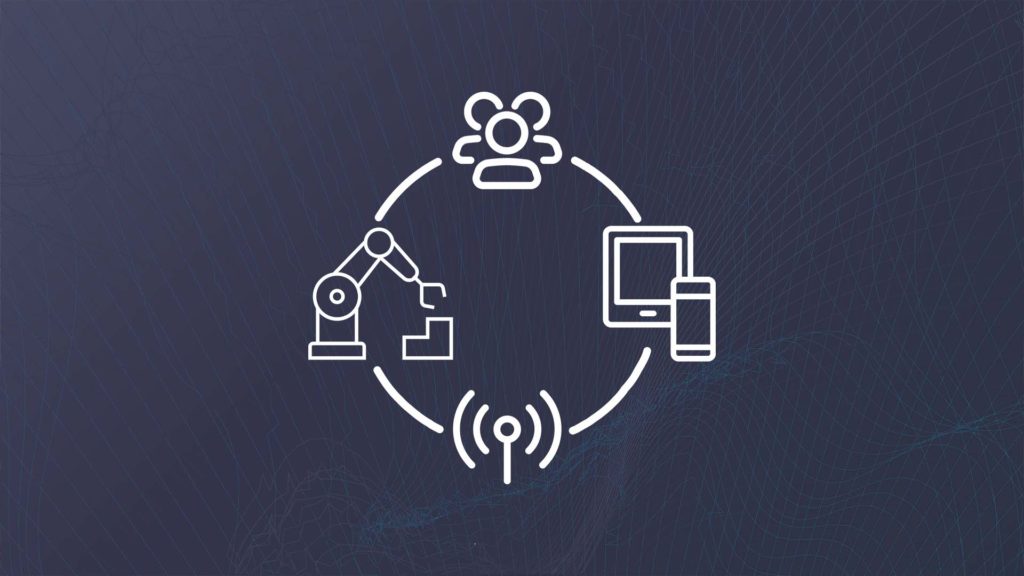
Lean principles have been transforming business and processes worldwide for more than 30 years. By implementing lean processes more efficiently with digital technologies, businesses have an opportunity to access the core benefit of lean: empowering people to drive improvements. These new technologies facilitate the collection and interpretation of data in more efficient ways.
What is Lean?
Lean is a set of principles to minimize waste, enabling more efficient productivity. The end objective of lean is to identify and improve any inefficient part of a process resulting in less or zero waste. Though initially created in manufacturing, these principles have been applied to all process-driven environments regardless of the industry for the efficiencies they bring. A lean business is designed to understand the customer and better meet their needs, with improved cost reduction, waste elimination, improved productivity and efficiency, and overall increased profitability.
What is Industry 4.0?
Industry 4.0 refers to the fourth industrial revolution and represents the significant transformation of production due to manufacturing digitalisation. It brings together the Internet of Things (IoT) and advanced manufacturing techniques to create more robust processes, and perfectly combines with Lean principles to transform business processes with continuous improvements.
How does technology improve data collection?
For Lean to yield ongoing results, businesses must collect data as efficiently as possible, to gain insights leading to ongoing improvements. There are three main ways data is collected: human input, automated digital processes, and data processing systems.
Human input
Human data input traditionally involved cumbersome manual processes such as report writing and checklists that had to be manually added to excel sheets and other systems. Now, this can be streamlined with hand scanners, and data input via tablets, which can be instantly added to reports or other management systems. Much of this process can also be automated by implementing IoT (Internet of Things) scanners.
Automated digital processes
Automated digital processes or machine-to-machine communication traditionally involved one machine pushing data into another machine, often connected via ethernet connections.
IoT transformed these data collection processes. Allowing two-way communication, one machine can speak to another, allowing for more valuable data. With cloud storage, this data is accessible by multiple systems and can potentially be accessed anywhere in the world, better facilitating remote working. This results in additional information and options for manufacturers.
Data processing systems
Many businesses are already collecting and interpreting data via existing systems, including the likes of manufacturing execution systems (MES) and enterprise resource planning software (ERPs). However, businesses have tied their operations into these legacy systems, which may often not provide the full functionality needed, may be outdated or may not communicate easily with each other. But modern platforms can connect to these systems while also facilitating human input and IoT collection, providing a suite of all a business’s systems. This data is then ripe for scrutiny,
With better accessibility and increased visibility, this data is open to much more robust improvement by lean methods.
How does Lean merge with Industry to bring continuous improvements?
Lean principles and digital technologies come together as “digital lean”, where endlessly applicable principles of greater efficiency join powerful technology, providing greater insights on process data than previously possible. Digital lean makes lean principles endlessly more efficient resulting in a much more robust application.
Previously, management teams needed to wait hours, days or months for detailed information. When digital lean is implemented successfully, it can provide real-time insights on inefficient processes, machinery failure, human error, missing deadlines, etc. This results in ongoing opportunities for process improvement, reduced costs, less waste and happier customers.
Using real-time insights to enable greater efficiencies with WrxFlo
With digital lean, businesses can understand where their inefficiencies are arising and will have real-time data showing how effective their improvements are. WrxFlo can be the partner in your digital transformation, working with you for continuous improvement by bringing together people, processes and technology.
Our platform will help you understand operation challenges in the supply chain and delivers more capacity, lower costs, better customer experience and better quality management. We can bring all your processes together and give you one source of truth.
To see how WrxFlo can transform your operations, contact us today and Request a Demo here.




